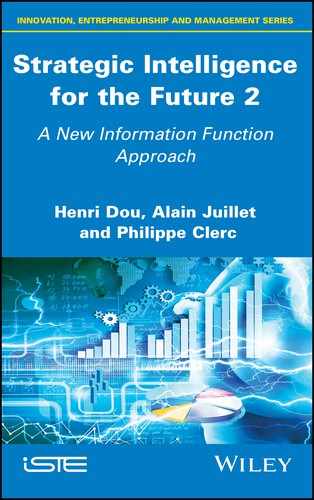Book Description
Information in all its forms is at the heart of the economic intelligence process. It is also a powerful vector of innovation and, more than ever, a balance between economic and societal forces.
That is why a large part of Strategic Intelligence for the Future 2 analyzes the various aspects of information, from traditional processing and research to the psychological and epigenetic aspects of its development. This leads to a new vision of its integration into organizations. In addition, new technologies offer extensive access to information, including social networks which are critically analyzed here.
In a complex world where geopolitics and the new concept of information warfare are becoming increasingly important, it becomes imperative to better apprehend and understand our environment, in order to develop critical thinking that will reinforce the different global aspects of security in economic intelligence.
Table of Contents
- Cover
- Preface
- Introduction
- 1 From Information Metabolism to Economic Intelligence
- 1.1. Introduction
- 1.2. Information metabolism according to Timothy Powell
- 1.3. Let us examine this concept in more detail
- 1.4. Organizations and human beings
- 1.5. Change within organizations via the information function and an epigenetic approach
- 1.6. The zone of proximal development
- 1.7. Conclusion
- 1.8. References
- 2 Changing Our Way of Thinking
- 2.1. Plato’s cave, or the fight against the world of received ideas
- 2.2. A society without schools
- 2.3. On the intelligence cycle
- 2.4. Thinking outside the box and the iron cage
- 2.5. Holistic thinking
- 2.6. Lateral thinking
- 2.7. To unravel Parkinson’s law and received ideas
- 2.8. The individual and their behavior
- 2.9. Thinking about the future or a return to future studies
- 2.10. Conclusion
- 2.11. References
- 3 Innovation
- 4 Formal Information Research
- 5 Examples of Bibliometric Analysis of Scientific Information and Patents
- 6 Social Networks
- 6.1. Different types of social networks
- 6.2. General remarks on social networks
- 6.3. The dangers of social networks
- 6.4. Minimizing negative influence on social networks
- 6.5. An example of an international social network: the Confucius Institutes
- 6.6. Examples of software enabling analysis of social networks
- 6.7. Beyond socialbots and other IT systems, human action: fake news
- 6.8. You love, you “like”, you click, you evaluate, but beware of “click farms”
- 6.9. Big Data
- 6.10. Conclusion
- 6.11. References
- 7 Information and Economic Security
- Conclusion
- Index
- Summary of Volume 1
- End User License Agreement
